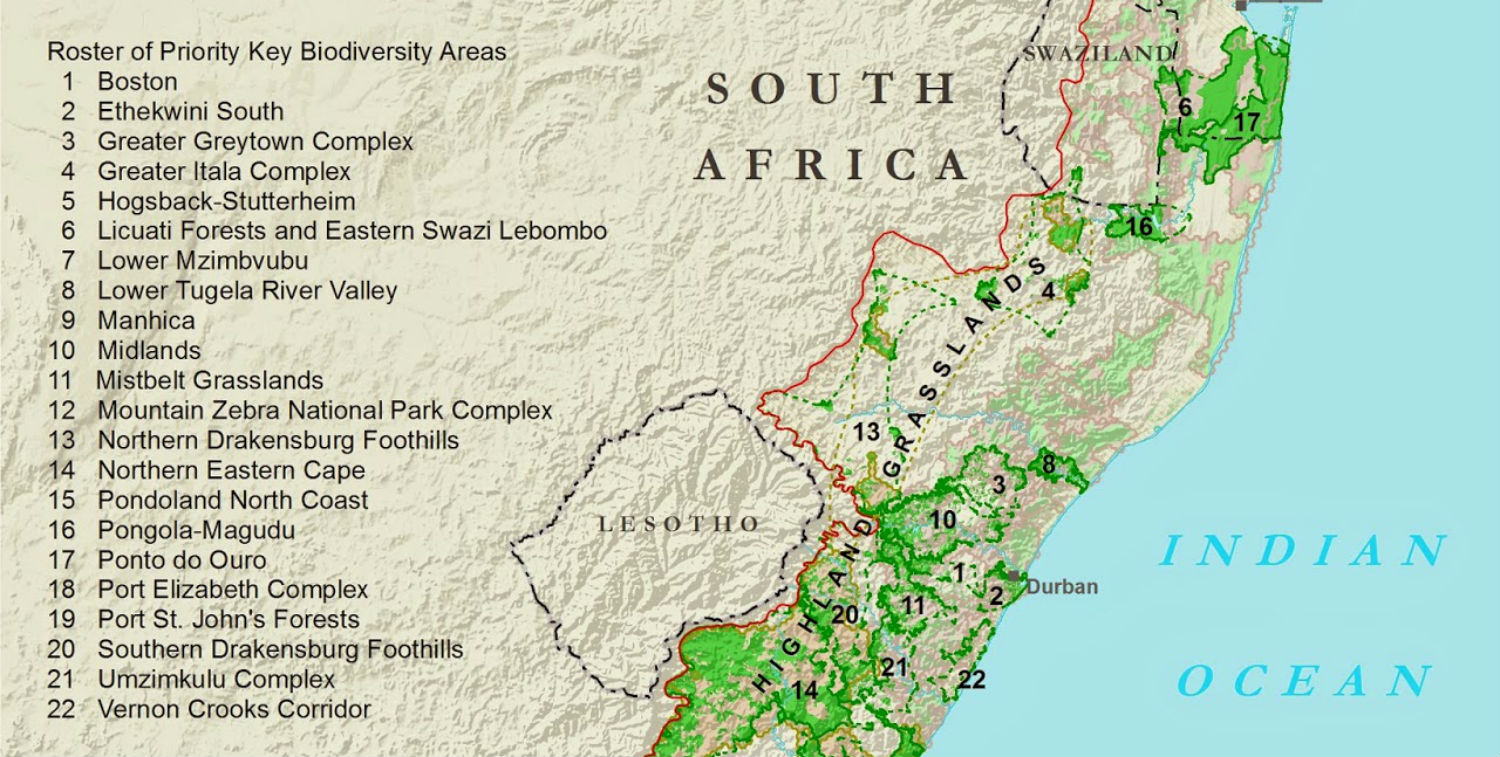
Main menu
Main menu

CEPF is a joint initiative of l’Agence Française de Développement, Conservation International, the European Union, Fondation Hans Wilsdorf, the Global Environment Facility, the Government of Canada, the Government of Japan and the World Bank. A fundamental goal is to ensure civil society is engaged in biodiversity conservation.
Visitez le site français コア情報の日本語翻訳を読むOr use Google Translate to translate the English site to your language:
GTranslate
Running from the Drakensberg Mountains at the border with Lesotho to the Wild Coast at Port St. John's, the Mzimvubu River is one of the most important, and one of the last free-flowing, rivers in South Africa. The ecosystems that make up the river's catchment zone channel fresh water to the river and make that water available to 1 million human residents and the many, many other forms of life found here, inside one of the world's biodiversity hotspots. The Critical Ecosystem Partnership Fund (CEPF) is supporting multiple nongovernmental organizations (NGOs) in South Africa to improve the management of the Mzimvubu River catchment to ensure water quality and quantity for people and biodiversity.
See our CEPF Google Earth tour of projects in the Mzimvubu Catchment.
CEPF is a joint initiative of l’Agence Française de Développement, Conservation International, the European Union, the Global Environment Facility, the Government of Japan, the MacArthur Foundation and the World Bank. The Fund provides grants to and builds capacity of nongovernmental and private-sector organizations around the world that are working to help protect biodiversity hotspots—Earth’s most biologically rich, yet threatened, regions—and improve human well-being.
One of the hotspots where it has supported civil society and conservation is the Maputaland-Pondoland-Albany (MPA) Hotspot. It lies along the east coast of southern Africa, below the Great Escarpment, extending from extreme southern Mozambique (south of the Limpopo River) and Mpumalanga province in South Africa (south of the Olifants River) in the north, through eastern Swaziland to the Eastern Cape province of South Africa in the south.
South Africa's Wildlands Conservation Trust, based in Hilton, serves as CEPF's regional implementation team, making sure that CEPF's conservation strategy for the hotspot is implemented and working with CEPF grantees to strengthen the conservation community in the hotspot. One focal area of CEPF's investment in MPA is the Mzimvubu River Catchment.
Matatiele is the town nearest the Motseng community that is working with CEPF grantees to improve management of the Mzimvubu River Catchment while gaining job opportunities and control over the land they reside on. Matatiele also hosts offices of CEPF grantees Environmental and Rural Solutions (ERS) and Conservation South Africa (CSA).
Contributing to Convention on Biological Diversity Aichi Targets
CEPF grantees CSA and ERS are working with local communities and the local and provincial governments to improve management of the Mzimvubu River catchment, including in and around the Ongeluksnek Nature Reserve on the mountainous border with Lesotho. Improving management of the land includes employing local residents to remove invasive plant species and working with local communities to rotate livestock grazing areas, which allows native plants to reseed. A few of the results as of September 2014:
Contributing to Convention on Biological Diversity Aichi Targets
An important piece of the water catchment management puzzle is private landowners. A CEPF small grant to the Cedarville Conservancy, a group of landowners in the Cedarville area of the Eastern Cape, encouraged rotational grazing to allow native grasslands to recover between grazing periods. These grasslands are key to preventing soil erosion while promoting water flow to the Mzimvubu River. The Cedarville conservancy has joined the Provincial Biodiversity Stewardship Programme and will be proclaimed as a protected environment in due course. A Protected environment is a legally recognized category of environmental protection that acknowledges farming activities as well as areas in these landscapes that have conservation value.
Contributing to Convention on Biological Diversity Aichi Targets
CEPF is providing support for wattled cranes (Bugeranus carunculatus) through a project implemented by the Endangered Wildife Trust (EWT) focusing on the cranes' breeding grounds in the Eastern Cape and Kwa-Zulu Natal provinces. The project involves a landowner-driven effort to sustainably manage grasslands and build a corridor of sustainably managed natural areas connecting the Swartberg area of the southern Ukhahlamba World Heritage Site west along the watershed of the Mzimvubu to the Ongeluksnek Nature Reserve.
Contributing to Convention on Biological Diversity Aichi Targets
The Penny Park Wetland near the town of Kokstad in KwaZulu-Natal Province is another of the sites where EWT is working with landowners on land use management. During dry periods, the 147 hectare wetland is a key source of water for Kokstad, with a population of more than 50,000, and other downstream residents. The wetland areas are under private ownership. Wattled cranes breed here, and a variety of other bird species can be found in Penny Park as well. Damaged by draining and diversion of a feeder stream, the wetland has benefited from recent government-funded rehabilitation efforts, and breeding prospects for many species in the area have improved. The EWT also has catalyzed support for the creation of a tourism experience at the wetland.
Contributing to Convention on Biological Diversity Aichi Targets
A forest patch at the village of Goso in the Eastern Cape is part of the Ntsubane Forest Complex, the largest remaining indigenous forest complex on the Wild Coast of South Africa. CEPF grantee Wildlife and Environment Society of South Africa (WESSA) is working with local communities, the Eastern Cape Parks and Tourism Agency and the Wild Coast Forest Users Association to improve management of these forests and help communities develop sustainable livelihoods that do not deplete their natural resources.
Through the CEPF-funded project, WESSA engaged communities to clear 60 hectares of invasive alien plants, trained 36 people in removal of invasives and forest rehabilitation, trained 10 people in alternative livelihoods, and improved the capacity of 1,000 youth to undertake local conservation biodiversity projects. In 2013, CEPF provided additional funds to expand the program.
View of the Mzimvubu reaching the Indian Ocean at Port St. Johns.